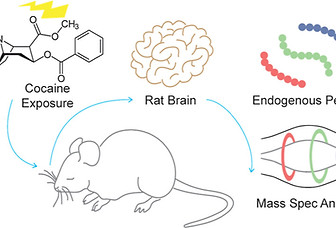top of page


Quantitative MS Strategies
We have validated several strategies for quantitative mass spectrometry studies. Among these are DiPyro, DiLeu, and SUGAR. These strategies are regularly employed for proteome profiling, neuropeptide analysis, and post-translational modification quantitation.

Comparative
Neuropeptide Study
Neuropeptide changes induced by food intake, environmental stress, etc. in crustacean and rat models are profiled and compared in this research area. Along with tissue biopsy strategies, microdyalisis is employed to monitor neuropeptide secretion in live animals.

Biomarker Discovery
We aims to identify unique biomarkers that could revolutionize the diagnosis and treatment of various diseases, enhancing our understanding of disease mechanisms and potentially developing targeted therapies.
Mass Spectrometry Imaging
Mass spectrometric imaging enables scientists to obtain 2D and 3D maps of biological analytes in their native tissues without the need for antibodies. The Li Research group implements this technology to examine distribution patterns of neuropeptides, proteins, lipids, and metabolites in a variety of tissues.
Ion Mobility-Mass Spectrometry
Ion Mobility - Mass Spectrometry separates gas-phase ions by mass, charge, size, and shape through collisions with inert gas molecules. The Li Research Group is currently utilizing IM-MS to develop novel strategies for glycan separation, peptide identification, and structural analyses.

Capillary Electrophoresis MS
Capillary zone electrophoresis and capillary isoelectric focusing are being developed to couple with MS detection and MS imaging, both off-line and on-line, for enhanced neuropeptidomic and glycomic analysis.
Capillary electrophoresis coupled to MALDI mass spectrometry imaging with large volume sample stacking injection for improved coverage of C. borealis neuropeptidome†
The Analyst
bottom of page





















